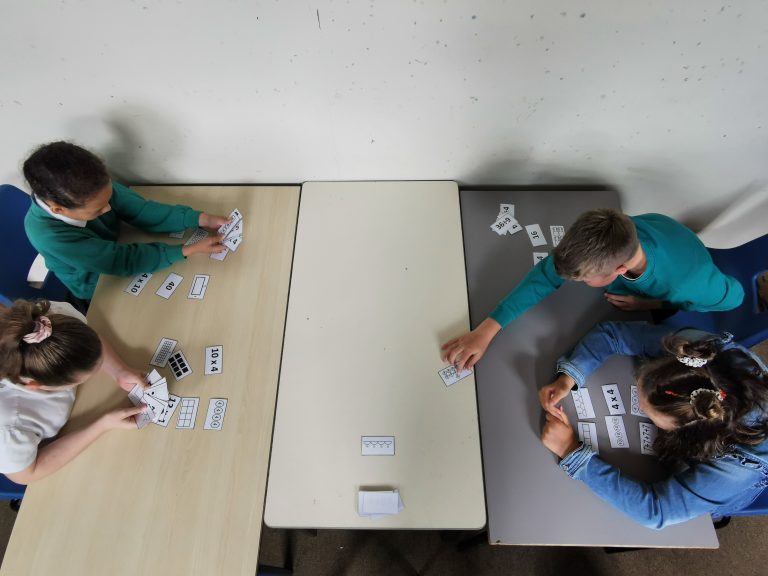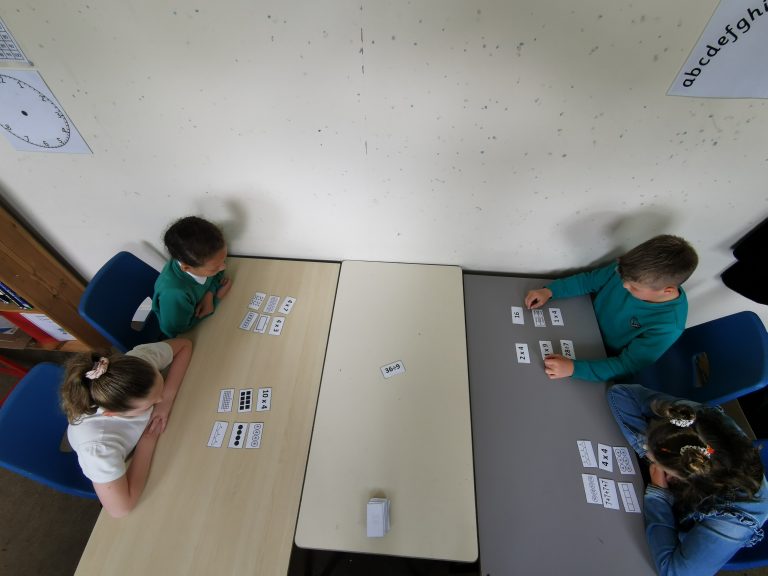We trialled using a conceptual approach to the teaching of times tables to pupils in LKS2. The scope of the project was initially limited to a small group of pupils who needed to secure tables that should have been consolidated over the previous year. It was then widened to target the whole cohort and teach the multiplication and division facts for the current year’s curriculum.
Our Approach
#389 Developing Times Table Knowledge in Lower KS2 – Sidegate Primary School
Anna Heaven
What did we do?
Summary of impact
Data wise, the first interim check was delayed due to external pressures such as high levels of COVID related staff and pupil absence. Consequently, the second group of pupils had started to receive the intervention when it took place and this limited our facility to compare the progress of the two different intervention groups. However, the interim check indicated positively that 71% of Groups A and B in Year 4 had improved their score. Furthermore, Group A in Year 3 recorded 78% pupils with an improved score. Year 3’s Group B showed a less positive view with only 44% of pupils improving their score. The class teachers have now adopted a more conceptual approach to teaching times tables at a cohort level and anecdotal evidence suggests that we should see a positive impact in the end of year PiXL assessments and the MTC.
A key success has been the involvement of one of the middle leaders. Alongside the project, one of the maths leads has been doing some additional research and staff training on the teaching of multiplication and division facts. This has worked well as it has meant that we have been able to share expertise and findings. She also has the capacity to continue to drive forward the developing teaching of times tables next year where I do not.
Steps taken
Prior to beginning the project, I designed a baseline assessment quiz for each cohort to test knowledge from specific times tables. Creating my own test rather than using any commercially available assessments, ensured that I was able to target the specific times tables that our curriculum listed for each year group. In practice this meant that Year 3 were focusing on learning the 2s, 5s and 10s which they had not consolidated in Year 2 and Year 4 were focusing on learning 2s, 5s, 10s, 3s, 4s and 8s which had not been consolidated in Year 3. Having researched some possible times tables interventions, I settled on adopting an approach and materials from the Aspirer Teaching Alliance. Traditionally, we had used an entirely procedural approach to teaching multiplication and division facts but evidence indicated that this was not having an impact and I used this project to develop the use of a more conceptual approach. Using games and activities from the Aspirer Teaching Alliance, a TA in each year group led an intervention group twice a week with the first group of children identified in the baseline assessment. In the meantime, the class teachers continued to teach their classes using our more traditional procedural approach. Following an interim assessment, a second group of pupils received the intervention. In the final term, the class teachers have adopted some of the games and activities from the intervention into whole class teaching.
What would we do differently
There were some elements of my plan that were not as successful in the application. For example, the intervention should have been run three times a week but this proved difficult to timetable with other pressures. There was also a significant impact felt when the key TA in Year 3 left the school part way through the first round of interventions and there was a short hiatus in staff able to complete the intervention. In the future, it would be prudent to train a backup member of staff to negate such eventualities. I would also think carefully about how many assessment points are realistic over the year as we struggled to fit them all in. (I should add the caveat that a significant factor in this was the extremely high rate of COVID absences and associated stress as a member of SLT trying to keep the day-to-day operations running. This will hopefully not be a factor in future projects.)
Resources required
We invested in a number of new times tables resources including pegboards and popits. There was also a significant investment of staff time and stationery costs for the creation of a large number of new number cards. Finally, there was a small cost to cover the maths leads to undertake training and monitoring of TAs delivering the intervention.


